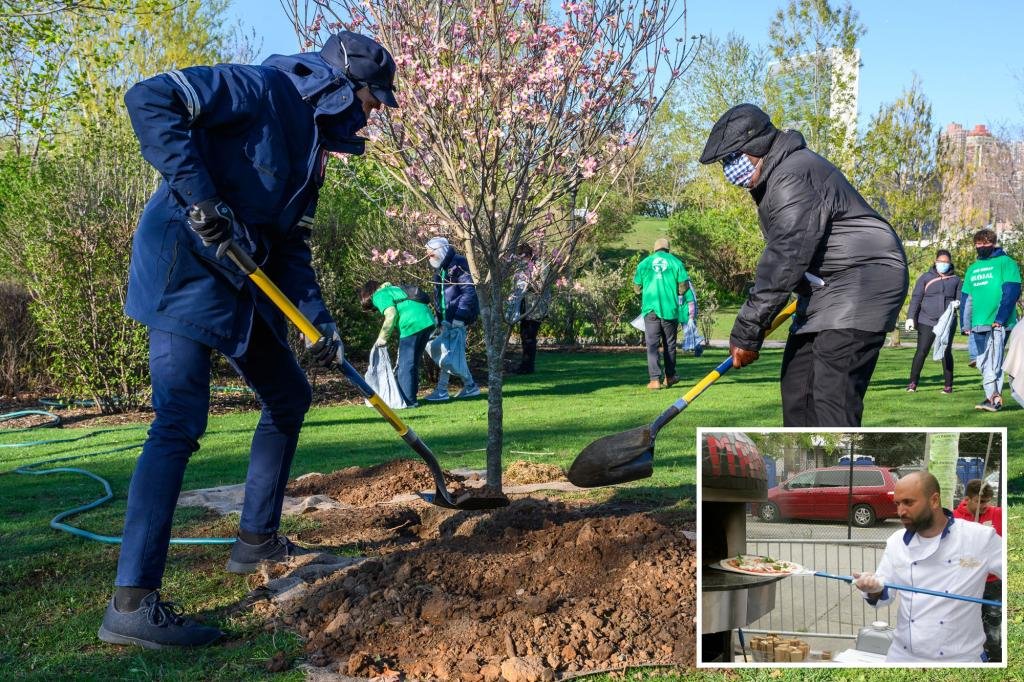Green policies in NYC are posing challenges for tree growth
For over 10 years, a sad, dead twig has extended from the sidewalk tree bed outside my Williamsburg apartment, resembling a gnarled witch’s finger. Though it was once a young tree, it now sits exposed to the sun, surrounded by litter and dog waste. Determined to take action, I submitted a request through the city’s Million Trees program, which aims to plant free trees throughout the five boroughs, in the hope of obtaining a new tree for my block. The automated response stated, “Your Service Request has been sent to the Department of Parks and Recreation. DPR will respond within 720 days.” Considering the significant role trees play in absorbing carbon from the air (approximately 48 pounds per year, according to the Arbor Foundation), waiting 720 days for a response seems excessive during a “climate emergency.” It has been 457 days since then, and I am yet to receive either my tree or a response.
New York was even contemplating banning wood- and coal-fired pizza ovens as part of its efforts to achieve environmental goals. Despite the undeniable evidence that planting trees enhances quality of life, politicians in NYC have made it challenging for regular citizens to cultivate urban gardens. It is astonishing to witness people who claim to love the environment doing so little to make a tangible impact. In fact, many of these individuals appear openly hostile to the idea. This sentiment is particularly evident among big city Democrats, who ironically prioritize ugliness and sterility in their pursuit of a greener planet. Once hailed as tree-huggers and adorned with “Save the Whales” t-shirts, environmentalists now deface priceless works of art and turn a blind eye to the widespread destruction of trees and endangered marine mammals.
In fact, the Scottish government recently acknowledged that it has felled 15.7 million trees since 2000 to make room for wind farms as part of its “green energy” and “net-zero” carbon emission objectives. This equates to approximately 1,700 trees per day. Closer to home, activists argue that the controversial development of wind farms off the coasts of New Jersey and Long Island has contributed to a record number of dead whales washing ashore this year, including at least 14 humpbacks. As New York City implements bans on items like plastic straws, shopping bags, and wood-fired pizza ovens due to environmental concerns, it is perplexing that these climate warriors have not considered incentivizing gardening. Gardens not only aid in carbon removal and combat the heat island effect prevalent in urban areas, but they also enhance human well-being. Is further incentivization truly necessary?
Well-maintained gardens beautify our streets and act as a deterrent to criminal activity. According to a 2022 study conducted in crime-ridden South Africa, for every 1% increase in total green space, there is a 1.2% decrease in violent crime and a 1.3% decrease in property crime. Gardening also offers a significantly healthier pastime compared to doom-scrolling or binge-watching Netflix. However, gardening can become costly, as many would concur. In New York City’s “green” crusade, trees, plants for stoops, backyards, sidewalk beds, and window boxes, along with soil, fertilizer, gardening tools, containers, and any other necessary items, are all subject to sales tax. Ironically, while produce in grocery stores remains tax-free, the government imposes its share when citizens plant their own vegetables or cultivate basil on their windowsills. There is a direct correlation between planting trees in urban neighborhoods and a decrease in crime. Just imagine the carbon footprint associated with shipping vegetables to stores, not to mention the plastic packaging. If the city genuinely prioritizes environmentalism, it should eliminate this tax and provide tax credits to dedicated citizen-greenskeepers.
Interestingly, New York Democrats have acknowledged this very point through legislation. However, their efforts only benefit affluent individuals and developers, leaving average New Yorkers and renters excluded. The city offers a “Green Roof” tax abatement of up to $200,000 for developers who cover at least 50% of residential rooftops in green space. While the creation of groovy roof-gardens should be commended, they primarily serve the interests of large-scale real estate developers rather than amateur green thumbs. Next to black holes and the human brain, Earth’s climate remains one of the most complex and least understood phenomena in the known universe. The science surrounding climate dynamics is far from settled. Nonetheless, one thing we do know is that plants inherently contribute positively. It is perplexing that within the green agenda, greenery itself appears to be an afterthought. Perhaps it is time to rename it the cobalt agenda.
Source link




